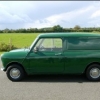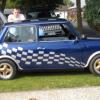Thats interesting because the split is there for a reason and the KAD ones don't have a split
Alsoi the ROVER manual states to use a large flat washer as a tool only to pull the CV and bearing system together
http://minispares.co...|Back to search
interesting i cant find the info about the washer in the spi or mpi rover manuals, in fact no mention of the bearings in the mpi manual and in the spi it just says make sure they are seated.
From memory its in the metro supplement, but it is certainly in the Haynes and as the statement above says "make sure they are seated" this tool... http://www.minispare...|Back to search will be ideal and has been proven to help, and being realistic, what manual says to use ratchet spanners or ratchet handles etc, but we still use them because they make life easier.
Edited by AP2020, 23 January 2020 - 08:25 AM.
















